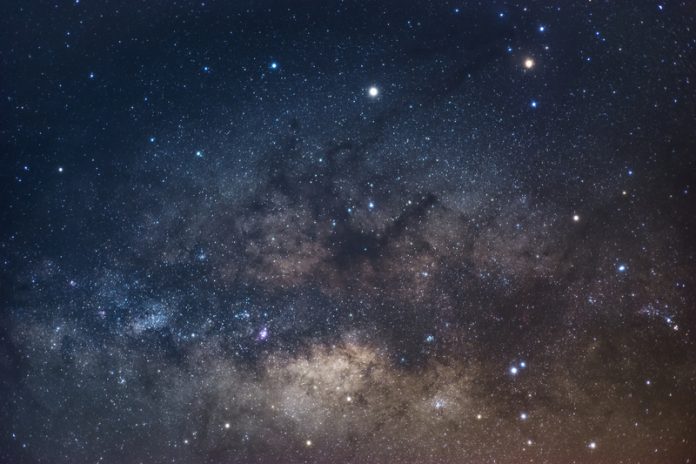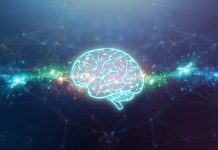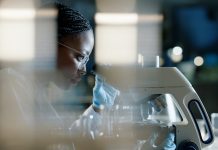Dr Gilles Gerbier, Dr Art McDonald and Dr Antony Noble delve into the unknown world of dark matter, the unidentified mass that physicists are still yet to solve
Did you know that more than 80% of the Universe’s mass is unknown? The fraction that we do know about is composed of planets, stars, and well, us, but the majority of the Universe is composed of unknown mass. What exactly this unknown mass is, as it has never been directly detected, is one of the great questions left facing physicists today.
Even though this unknown mass has never been detected, it does have a name: dark matter. But wait, if it has never been detected, how do we know it exists? Based on observations, astrophysicists discovered that galaxies were spinning much faster than expected based on calculations from existing known “bright” matter, that is, there shouldn’t be enough gravitational force in the glowing stars to hold the galaxies together. Yet galaxies so rarely disintegrate, there is clearly some other source of gravity that is holding everything together. This mysterious substance was dubbed dark matter.
But what is it? There have been many particle candidates over the years: axions, gravitinos, among others, but the current theoretical particle still showing the most promise is the WIMP, or Weakly Interacting Massive Particle. The “weakly interacting” part is what makes a WIMP so hard to detect. Here is the picture: the solar system and its planets, like the Earth, is bathing in a halo of WIMPs flying around and once in a while interacting with nuclei of ordinary matter.
Efforts have been made, of course, to detect it in underground labs around the world, and to ‘make’ it in the Large Hadron Collider, similar to its creation in the Big Bang. All of these attempts have been unsuccessful so far, and dark matter has remained as elusive as ever.
What if it is even more elusive than anticipated and/or if its properties escaped the attention of traditional searches? New ideas to enlarge the parameter space of exploration and especially include lower mass Dark Matter particles are then called for to extend the sensitivities tremendously.
The three projects described below, in which the three authors are involved, use complementary cutting-edge technologies to address these new challenges. To detect such minuscule signals, the experiments will be installed underground in SNOLAB and LNGS, Italy, to protect them from sources of “backgrounds” simulating signals. SNOLAB, near Sudbury, Ontario is one of the deepest and the cleanest underground laboratory in the world. All existing projects are international and nationally supported by NSERC and CFI. The McDonald Institute provides additional human and technical resources coordinated between 11 institutions in Canada.
The Arthur B. McDonald Canadian Astroparticle Physics Institute (McDonald Institute) is a CFREF-funded scientific network supporting Canada’s Astroparticle Physics research community. Its chief concern is growing and connecting the community to solve major scientific questions like the detection of dark matter. It administers funds to expand the talent pool of faculty, graduate students and fellows working in dark matter, neutrinos and related research. The Institute works with major experimental and theoretical facilities in Canada and is maximizing economic and social benefit of large-scale research to better engage the public with the work of astroparticle physicists. See www.mcdonaldinstitute.ca for more details.
Three projects to go beyond the present status
NEWS-G: a new window on light dark matter
NEWS-G uses a new type of spherical gaseous detector developed within a Europe-North America collaboration, to be sensitive at the unexplored lower end of the particle mass range, comparable in mass to a proton or below. Here the ability of such detectors to detect extremely low current pulses, equivalent to a single electron, combined with the use of “light” targets, like helium, or hydrogen are keys for this exploration. The new 140 cm diameter detector with its shields will start operation in 2019 at SNOLAB.

PICO: a unique ultra-sensitive detector listening for dark matter with spin!
PICO has a very unique approach to search for dark matter. The core of the detector is a superheated fluid (C3F8). The fluid is still a liquid, despite being well above the boiling point. A small energy deposition from a WIMP interaction can initiate boiling and the creation of a gas bubble. These are easily identified using high-speed cameras, and the popping sound is heard with sensitive microphones. WIMPs can be distinguished from fake radioactivity signals through their characteristic optical and acoustic signals. PICO is world-leading in the search for dark matter particles with spin and the collaboration are currently upgrading their detectors to increase the sensitivity by a factor of 100.
GADMC: a worldwide multi-ton scale project to reach an ultimate sensitivity using liquid argon
Liquid argon gives out a very short burst of light from a dark matter particle, but a much longer burst from background radioactivity, so it is easy to tell them apart. Right now, there are 3 tonnes of argon operating in the DEAP detector at SNOLAB and an international collaboration of 350 scientists from 12 countries have come together to build a 20-tonne detector to be built in Italy (DarkSide-20k), followed by a 300-tonne detector, likely to be installed in SNOLAB. Increasing the sensitivity a factor of 100 may be close to the ultimate sensitivity, as the main background is neutrinos that cannot be shielded by an underground location.
Synthesis
At Queen’s University, under McDonald Institute banner, G. Gerbier, holder of a CERC in astroparticle physics and PI of NEWS-G, T. Noble, PI of the PICO program, former director of SNOLAB, scientific director of MI and A. McDonald, former director of SNO project, Nobel Prize winner and active promoter of GADMC, join together their skills, enthusiasm and teams towards identifying the nature of dark matter, one of the most arduous modern physics questions, holding physicists attention for close to a century now.
Dr Gilles Gerbier
Dr Art McDonald
Dr Antony Noble
Physics, Engineering Physics and Astronomy
Queen’s University
Tel: +1 613 533 6323











